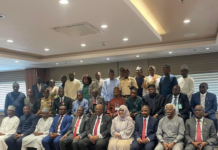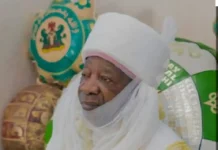FG VS ASUU: Court Ratifies CONUA, NAMDA as Trade Unions
POLITICS DIGEST- The National Industrial Court on Tuesday affirmed the recognition of the Congress of Nigerian University Academics (CONUA) and the National Association of Medical and Dental Academics (NAMDA). as trade unions.
The claimant in the suit, the Academic Staff Union of Universities (ASUU), dragged the Minister of Labour and Employment, The Registrar, Trade Union, CONUA and NAMDA as first, second, third and fourth defendants respectively.
Delivering judgment, Justice Benedict Kanyip held that in line with the International Labour Organisation ( ILO) Act, there can be more than one trade union within employment.
The judge in addition stated that contrary to the claimant’s submission that Section 3 ( 2) of the Trade Union Act made the first and second defendants incompetent to register CONUA and NAMDA to coexist and carry out the same functions in the universities as ASUU.
Kanyip said that the Section does not encourage the monopoly of trade unions, but rather the section encourages the existence of other trade unions.
The court said “The reliefs prayed by the claimant failed, refused and I so hold. I make no order as to cost”.
From facts, the claimant had instituted the suit via an originating summons filed on June 26, 2022.
The claimant’s counsel, Mr Femi Falana SAN, submitted two questions for determination.
Part of the question was whether by Section 4 (2) of the constitution of Nigeria 1999 as amended and Section 3 (2) of TUA, the second defendant can register CONUA and NAMDA to carry out the same functions covering the same jurisdiction sphere as the claimant.
The counsel further averred that the second and third defendants registered the third and fourth defendants in a bid to split ASUU.
The first and second defendants in reply submitted that the court should determine whether the issues raised by the claimant were not speculative and academic.
The third defendant on its part raised three issues that bordered on whether the claimant put before the court any proof, whether the claimant’s suit was not liable to be dismissed and whether the third and fourth defendants were not legally registered.
Read Also:
The fourth defendant submitted for the determination of the court whether there was any violation in the registration of the two unions.
The court in arriving at its decision held that the claimant in its submission stated that the first and second defendants approved the registration of CONUA to operate in the universities as a trade union on Oct.4,2022.
According to the court, the claimant gave evidence of this assertion from an online publication titled ” FG registers 2 new university unions in a bid to split ASUU”.
Although the fourth defendant objected to the admissibility of the publication in evidence, stating that the publication was a hearsay evidence, the court however dismissed the objection and allowed the admissibility as Exhibit 1.
The court also held that the fourth defendant was not registered as a trade union until Jan.11, collected the certificate of registration on Jan. 13 and formally completed all processes to be registered as a trade union on Jan.17, 2023.
The court therefore ruled that as at June 26,2022 when the claimant filed the suit, the fourth defendant was not in existence.
The court in the judgment equally said that the claimant did not have any evidence when it came to court to file the suit.
Adding that the name under which the claimant sued the fourth defendant was wrongly spelt as “Nigeria Association of Medical Doctors Academics” instead of ” National Association of Medical Doctors Academics”.
The court however added a suit can be allowed if a juristic entity is misnamed.
The judge stated that the first and second defendants argued that because the claimant could not produce evidence that the two unions were registered by them before filing the suit, the action rendered the suit as speculative, academic and should be dismissed.
In defending the suit, the third defendant also submitted that the suit was vague, not precise and described the claimant’t claim as not substantiative.
The court concluded by stating that there was no express conferment of exclusive jurisdictional scope of the claimant, that therefore the claimant cannot not claim it.
The court added that the claimant failed to show the encroachment of the jurisdictional scope which it cannot lay exclusive right to it by restricting the rights of others, as the second defendant did not lay bare such exclusive rights in its schedule.

















